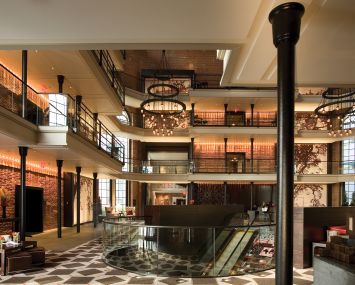The Five Fs of Retail
By Petra Durnin August 20, 2018 11:50 am
reprints
I went to the mall with a friend last weekend and as we slowly navigated the packed parking lot, she said, “I thought retail was dying, why are so many people here?” It’s a common misconception, given all the recent headlines, but the reality is that retail isn’t dying, it’s evolving—probably for the first time since the invention of the mall.
Though I work just across the street, I hadn’t been to The Americana at Brand in Glendale, Calif. in a while because I do much of my shopping online. When I think of an item I need or realize I’m out of something, I tell my smart speaker to put it on one of my shopping lists. When I sit down to order, I use a coupon app to scour the internet and tell me if I’m paying the lowest price. So, what actually got me out from behind the computer to go to the mall on this sunny afternoon?
I needed inspiration. I wasn’t exactly sure what I was looking for and online searching wasn’t doing it for me. Upon arrival, I was immediately hit with lots of choices I could touch and scrutinize, but above all, I was offered an experience. That is the biggest difference between shopping 10 years ago and today and many times the determining factor between thriving and faltering retailers.
The success of this experience hinges on what we at CBRE have dubbed the “Five Fs” of retail: fitness, furniture, food, fashion and fun. These categories have eked out an important place in the retail sphere by offering experiences to consumers.
Fitness is at the top of the list and leased approximately 4.4 million square feet of retail space in the last decade in the Greater Los Angeles region. Many treadmills-only spaces have been replaced by climbing walls, hot or even anti-gravity yoga rooms, body-sculpting Pilates machines and indoor parkour courses. Next on the list is furniture tenants, which have been a great fit for former big-box space due to their showroom set-up where patrons can meander through staged living rooms and try out their new couch or dining room set, while food halls and unique restaurants entice patrons with memorable edibles.
The idea of providing an experience is closely related to the concept of convenience. We spend too many hours driving from one end of town to the other— especially here in L.A.— commuting, fulfilling obligations, shepherding kids and running errands. Retail not only has to provide us with something akin to what the office now affords—a home away from home—but related offerings that help us get more done in a shorter amount of time. When we go to the gym, we want to be able to easily knock a few more items off of our To Do list while we’re there. Our research has shown that gym goers have become a captive audience and are now far more likely to visit adjacent retailers before or after working out. Mall operators recognize this and consider these synergies when curating their tenant mix: place a dry cleaner, a nail salon, a dog grooming place, a health food takeout and a fitness clothing retailer near the gym. Voila! In one fell swoop I can drop off my laundry and my dog for his summer haircut before doing a one-hour Zumba class. Then I quickly purchase the workout tights I’ve had my eye on and indulge in a quick manicure before grabbing dinner. Oh, and then I pick up the dog!
Uniqueness is another factor consumers crave, especially when it comes to food and fun. Cookie-cutter chains and brands that offer quick assembly-line food are being replaced by locally sourced startups with aspiring chefs that span the entirety of the culinary spectrum and excite the imagination. Fresh ingredients, a touch of the exotic and a visual flair ripe for social media are a recipe for success.
A CBRE survey found that millennials between the ages of 22 and 29 spend nearly 50 percent of their income on leisure and go out for dinner an average of 10 days per month. These patterns helped identify what makes the increasingly popular food hall concept—a combination of fun and food—so successful, concluding that proximity to a large concentration of millennials is crucial. The Inland Empire, for example, is a hot spot for young millennial families, and the success of food halls in neighboring markets caught the attention of developers, and as a result, two new food halls have already or are set to open here this year.
As for my friend and I, we strolled through crowds laden with bags filled with more than we set out to find, our senses took in every aroma, sight and sound. Our primitive urge to hunt and gather was satiated by the new face of retail and filled us with a sense of fun and adventure.
Petra Durnin is the director of research and analysis for CBRE Southern California.


